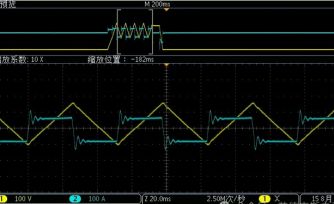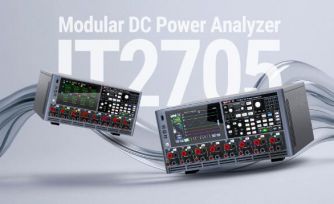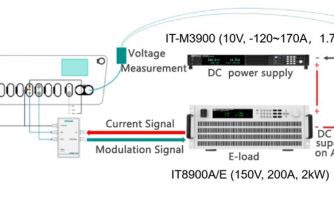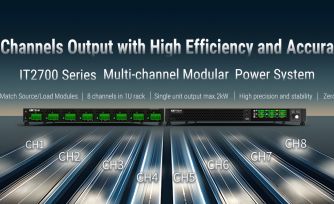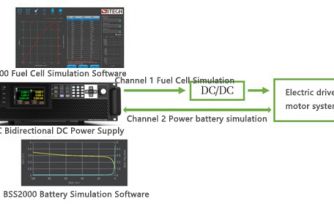Application of IT6600C dual-channel power supply in hydrogen-electric hybrid power system
With the rapid development of new energy vehicles and low-altitude economy technologies, hybrid energy systems combining lithium batteries and fuel cells—known as hydrogen-electric hybrid systems—are emerging as a key solution to enhance energy efficiency and extend operational endurance.
In these new energy systems, lithium batteries offer high power density and are capable of responding quickly to transient high-current demands, such as acceleration and regenerative braking. This makes them ideal for short-duration, high-power scenarios.
Fuel cells, on the other hand, provide high energy density and can deliver a stable, long-term power supply for sustained operations such as cruising. This greatly enhances overall system endurance while reducing the frequency of charging or hydrogen refueling.
By integrating the strengths of both technologies, hydrogen-electric hybrid systems offer the following core advantages:
-
Balanced
Endurance and Efficiency:
The continuous power supply from fuel cells compensates for the limited energy density of lithium batteries, while the high-power output of lithium batteries offsets the slower dynamic response of fuel cells. This complementary relationship makes hydrogen-electric hybrid systems particularly well-suited for high energy consumption scenarios such as eVTOLs and long-haul heavy-duty trucks. -
Environmental
Sustainability:
Hydrogen fuel cells emit only water as a byproduct. When paired with green hydrogen production technologies, they can achieve a truly zero-carbon cycle, aligning with global efforts toward carbon neutrality and environmental sustainability. -
Enhanced
Redundancy and Reliability:
The dual-energy architecture enhances system safety through fault-tolerant operation. For instance, in the event of a fuel cell failure, the lithium battery can temporarily take over the load, ensuring the continuity of critical operations—such as emergency landing procedures for aircraft.
Industry Requirements and Testing Challenges
To validate the performance of hydrogen-electric hybrid systems, test platforms must meet the following key requirements:
1. Dynamic Operating Condition Simulation
The system must replicate the fast charge/discharge cycles of lithium
batteries—such as high-frequency switching between 20% to 80% SOC—and simulate
the slower response characteristics of fuel cells, where power adjustment
occurs over several seconds. This ensures realistic reproduction of operating
conditions.
2. Energy Allocation Strategy Verification
The platform should optimize the power distribution between the two energy
sources under various load scenarios—for example, using the lithium battery as
the primary source during acceleration or climbing, and the fuel cell during
cruising—to maximize overall system efficiency.
3. Fault Tolerance Testing
Simulate seamless compensation by the secondary energy source in the event of a
primary energy failure, such as hydrogen supply interruption in a fuel cell
system.
The testing and validation of hydrogen-electric hybrid systems especially require accurate simulation and testing of lithium battery and fuel cell characteristics. ITECH’s unique dual-channel power supply, the IT6600C Series, is highly aligned with these requirements.
1. Exceptional Hardware Performance
Dual channels with independent control: Channel 1 simulates a lithium battery, while Channel 2 simulates a fuel cell. Voltage/current curves and battery models can be configured independently. Supports both 800V and 1500V platforms, with power scalability up to 10 MW.
2. Advanced Simulation Capabilities
· Independent Mode: The two channels are fully isolated, enabling the simulation of different energy characteristics.
· Series/Parallel Mode: Validates mixed output scenarios involving high voltage or high current.
· Battery Model Function: Preloads the voltage-current polarization curve of a fuel cell or the SOC-voltage curve of a lithium battery.
Channel 1 (Lithium Battery Simulation):
· Discharge Curve: Sets voltage variation based on SOC using the built-in battery model or the BSS2000 battery simulator software.
· Dynamic Response: Simulates current step changes from charging to discharging during regenerative braking.
Channel 2 (Fuel Cell Simulation):
· Voltage-Current Polarization Curve: Inputs typical V-I characteristics of the fuel cell via FCS3000 fuel cell simulator software.
· Slow Adjustment: Simulates the "gas supply delay" behavior of a fuel cell with adjustable current rise rate.
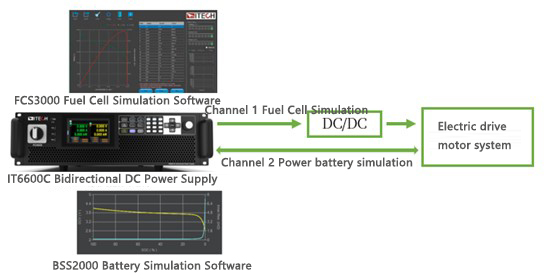
IT6600C dual channel test schematic
ITECH IT6600C dual-channel power supply meets the testing needs of
hybrid energy systems combining lithium batteries and fuel cells through
flexible dual-channel collaborative control. With high integration, fast
response, and high precision, it supports testing from component level to
system level. This solution provides a reliable testing approach for the
development of new energy hybrid systems, accelerating the adoption of clean
energy in the transportation sector.
For more information, please visit the ITECH website: https://www.itechate.com

